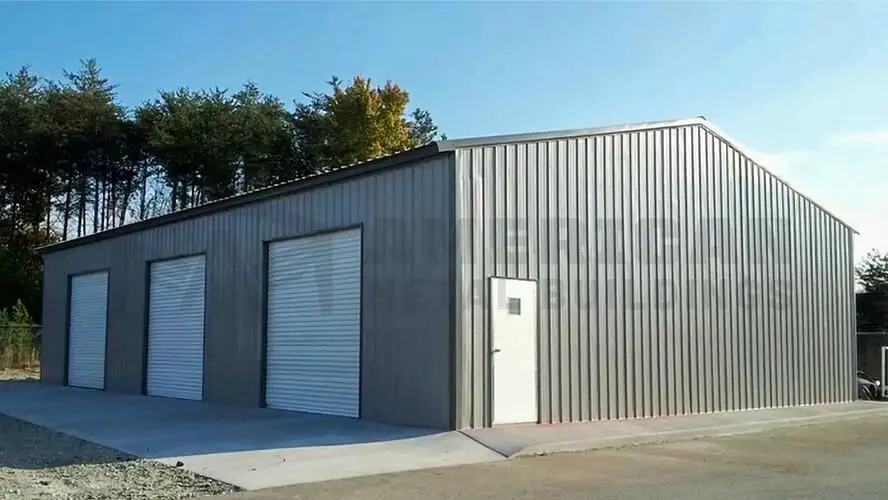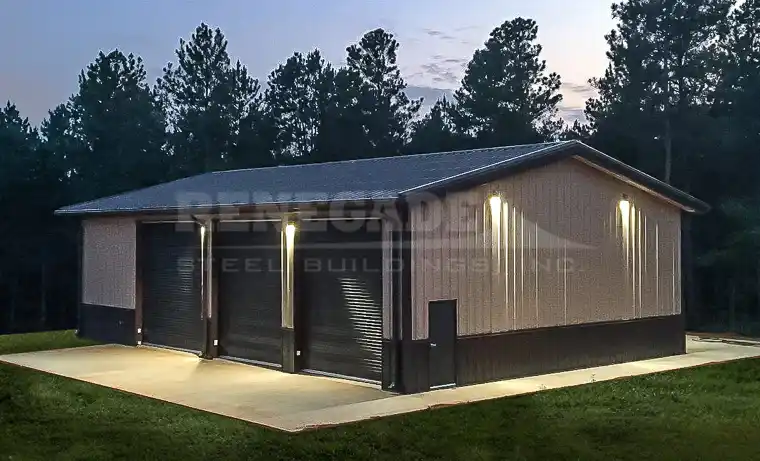Effective Setup Practices for Steel Buildings: Improving Your Building Refine
From thorough preparation to the utilization of pre-engineered parts, each step plays a crucial function in speeding up the building and construction timeline. By delving right into the realm of innovative installation strategies and guaranteeing rigorous quality control actions, the capacity for enhancing the whole building procedure becomes not simply an opportunity but a sensible truth.
Preparation for Efficiency
When aiming to optimize performance in steel structure installation, meticulous preparation is essential. Proper planning sets the foundation for a smooth and orderly building process, inevitably conserving time and sources.

In addition, efficient interaction amongst all stakeholders is extremely important throughout the planning stage. Regular meetings and updates aid keep every person on the same web page, minimize misconceptions, and cultivate a collective workplace - steel buildings. By investing effort and time into precise planning, steel structure installation can be carried out with accuracy and efficiency
Making Use Of Pre-Engineered Elements
Efficient steel building installment techniques can be even more boosted by leveraging the utilization of pre-engineered elements. Pre-engineered elements are created and made off-site to precise specs, making certain compatibility and ease of assembly during the building procedure. By integrating pre-engineered components such as beams, trusses, columns, and panels, home builders can simplify the installation process, reduce on-site labor requirements, and reduce building and construction waste.
One key advantage of utilizing pre-engineered components is the significant time savings they provide. Considering that these elements are produced in a controlled setting, they arrive at the construction website all set for fast and reliable setup. This not only speeds up the overall building timeline however likewise helps to reduce project hold-ups and linked prices.
Moreover, pre-engineered elements are crafted for ideal performance and structural integrity, ensuring the long-term durability and security of the steel structure. By making use of these standardized components, builders can attain regular high quality across various jobs while also profiting from expense financial savings linked with lowered product waste and labor expenditures.
Maximizing Building Sequencing
To maximize performance and effectiveness in steel building installment, critical optimization of building and construction sequencing is vital. By thoroughly intending the order in which tasks are implemented, building teams can decrease downtime, minimize material handling, and simplify the overall structure process. One vital aspect of maximizing construction sequencing is to focus on crucial course activities that straight impact project timelines. This includes recognizing tasks that depend on each other and making sure that they are finished in the most efficient order to avoid hold-ups. In addition, grouping comparable jobs together can assist decrease setup and teardown time in between different tasks.

Executing Advanced Setup Strategies
Executing advanced installment techniques boosts the efficiency and top quality of steel building construction tasks. By integrating sophisticated techniques such as computer-aided layout (CAD) for accurate preparation, prefabrication of components off-site, and application of sophisticated equipment like robotic welders, building and construction teams can significantly enhance the installment process. Prefabrication lowers on-site labor requirements and building and construction time by fabricating structure elements in a regulated atmosphere, decreasing errors and remodel.
Making Sure Top Quality Control
Building upon the utilization of advanced installation strategies, preserving stringent news quality control procedures is paramount in making certain the structural stability and dependability of steel structure jobs. Quality control starts with the selection of high-quality products that fulfill sector standards and requirements. Normal examinations throughout the construction procedure assistance identify any type of deviations from the style or potential issues that could endanger the building's strength.
Documentation is a crucial element of quality control, making certain that all actions in the installation procedure stick to the authorized regulations and plans. This includes recording inspections, product qualifications, and any adjustments made during construction. Applying a helpful resources clear interaction protocol among group members and subcontractors assists improve the quality assurance process and address any problems quickly.

Verdict
Finally, embracing reliable installation methods for steel structures is crucial for improving the building and construction process. By very carefully intending, utilizing pre-engineered elements, enhancing sequencing, applying advanced techniques, and making sure top quality control, building and construction projects can be completed faster and successfully. These techniques not just save time and resources but also contribute to the overall success of the project. It is necessary to focus on effectiveness in order to take full advantage of efficiency and attain effective end results in steel structure construction.
To make the most of efficiency and effectiveness in steel building installment, tactical optimization of building and construction sequencing is vital. In general, by enhancing building and construction sequencing, steel building setup can be finished extra effectively, saving time and costs in the procedure.
Applying innovative installment techniques boosts the efficiency and high quality of steel building construction jobs. By focusing on top quality control throughout the setup process, building groups can supply steel buildings that are not just efficient however additionally durable and look at this web-site reliable.
In verdict, taking on reliable installation practices for steel structures is important for improving the construction process.